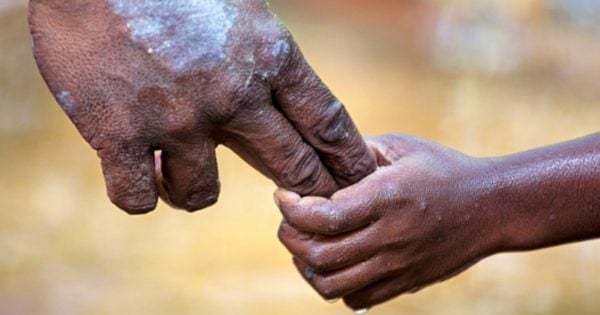Before British colonisation, there were more than 250 different Indigenous languages spoken across Australia.
Today, there are only about 48 different Aboriginal languages with more than than 100 speakers, and it’s predicted that 25 per cent of the remaining languages will vanish over the next generation.
When a language dies, so too do the stories, songs and insights of an entire culture accumulated over tens of thousands of years.
Australian students must learn a language in High School, with many opting to learn Mandarin, Italian, French or Spanish.
But not in the rural town of Young, New South Wales.
Watch the video playing above, courtesy of SBS, to see an Indigenous language being taught in Young.
LISTEN: Australian sporting legend Cathy Freeman is interview on Mamamia podcast, Fighting For Fair. Post continues below.
They are part of a growing number of schools around the country teaching an Indigenous language.
Of the 120 students in Year Seven at Young High, 30 identify as Aboriginal. Many of them have parents who denied their heritage, or actively rebelled against exploring it.
But learning an Indigenous language, Wiradjuri in Young’s case, connects students to the land upon which they live. It validates and highlights the Indigenous experience, and respects the roots which we all share.


Top Comments
I would be very happy for my children to learn Indigenous languages in schools.
Why though, how do they benefit? How does it help your child when only 100 people understand the language.
If anything, encourage them to learn something that might actually help them in life like Indonesian, French, German, Portuguese or Spanish. ie Something that is useful for your child rather than something you support politically.
I would love to see this incorporated into all schools!